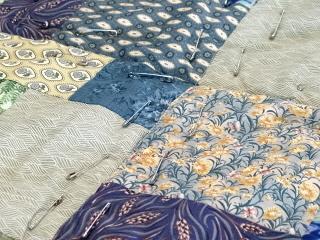All About Quilting Blocks
Have you ever before wondered how quilt blocks are named?
As you check out a publication with hundreds of patchwork blocks, many intriguing points put up. You will most likely discover quilt blocks with a different design while having the exact same name. Furthermore, you will certainly locate quilt blocks that look the very same yet have various names.

How did this take place? And what is the inspiration for naming patchwork blocks to begin with?
A check out record and understanding life in the very early years of America are particularly helpful to pick up these inquiries.
Because very early Americans were driven from England to acquire spiritual liberty, they continuouslied be quite religiously minded in the New World.
All the time Sunday was invested at religion for both religious beliefs and social time. The early morning and afternoon preachings were separated by an hour-long lunch break where families would share the occasions of the week while delighting in the peaceful meal.
Many quilts and quilt blocks mirrored that religious devotion.
"World Without End," a patchwork made throughout the Revolutionary period, is a name raised from guide of Common Prayer. It was, and still is, a phrase acquainted in every religion, regardless of profession.
It's also appealing to see the range in complexity of making quilt blocks and patchworks. The "Star of Bethlehem," "Jacobs Ladder" and "Job's Tears" stand for patchworks and blocks and were more learnt layouts. While the "Star and Cross" and "King David's Crown" were easier and preferred for bed quilts.
In addition, early Americans were also really politically minded. Also though women couldn't vote, they were acutely knowledgeable about the value of the politics of the day.
While initially the political initiatives were directed towards financial flexibility and comfort from onerous taxes, later the politics changed toward political freedom as well. After a century of neighborhood federal government, Americans were politically astute, and were dedicated to creating the equipment of a republic that would certainly endure.
And the political chats extended into the quilt blocks developed throughout that time, enabling quilters to share opinions established as they heard the debates of the day.
Also calling a patchwork block roused conflict. A block called "Whig Rose" and "Democrat Rose" created a dispute regarding which was the correct name - a discussion not worked out, maybe even today.
National politics and quilts continuously entwine with "The Little Giant" being named after Stephen A. Douglas (from the Civil War time), the "Free Trade Block" (which has relevance today), "Fifty-four Forty or Fight" (from the very early 1800s battle between the US and Canada over region in the northwest region) and "Tippecanoe and Tyler Too" (a campaign motto throughout the Harrison presidential election in 1840).
The professions and occupations of the moment likewise supplied motivation for quilt names. "The Anvil," "The Carpenter's Wheel," "The Churn Dash," and "The Water Mill" all came from women's familiarity with old-time contactings.
"The Reel" was a block that stood for the when global career of ladies - spinning. The Reel was used to wind thread onto skeins.
Outside life provided much more inspiration for quilt block names. Take, as an example, "Flying Bats." Bats were when quite usual, and without displays in open glass, bats would certainly be enticed to the light inside residences. As soon as within, blinded by the illumination of the lights, the bats flapped and banged versus wall surfaces and the ceiling while females ducked and yelled while small boys made a game of chasing them.
Since the sunlight, candle lights and oil lamps were the only source of lighting, the leaders depend on the all-natural illumination of day for most of their activities. Industrious people increased early and managed to witness the magnificence of every sunrise. It wasn't too uncommon that "Rising Sun" quilts would certainly be made.
There are two various approaches of making this detailed pattern, both booked for expert quilt molds.
In sharp comparison, patchwork blocks representing the establishing sunlight are too much less complex. A Block like "Setting Sun," also called "Indian Summer" took some ability, because it features triangles on a curve, yet was not as complicated as the Rising Sun.
Perhaps the compare stood for the difference in the degree of power of a quilter in between the early morning rising and the end of the day, having finished a full day's employment.
Numerous styles were specific to their community of origin. And as they moved far from the neighborhood, their form altered. Since there were no published designs at the time, duplication of the style relied on copying the pattern by taking a look at an alreadying existing quilt, bearing in mind the design having actually viewed it previously, or comprehending a verbal description of the patchwork block.
Any of these methods could possibly lead to the percentages of the shapes within the block altering, therefore altering the general appearance of the quilt; and a new block style with the exact same name was born, although the quilter thought she was duplicating the cover block specifically.

